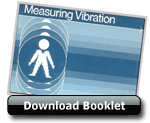
THE
BLACK EDITION™ ENGINE OVERHAUL PROCESS:
FULL DOMAIN FREQUENCY
VIBRATION TESTED
 Watch the video ! (movie length - 2 minutes) Watch the video ! (movie length - 2 minutes)
| Through the use of this computer aided analysis, we can detect abnormalities that are often found in production line engines including "in operation effective load unbalance" of the crankshaft and counterweights, connecting rod and piston pin masses, alternator drive, turbo shaft and many other parts. Using a tri-axial piezoelectric accelerometer and a full domain frequency analysis vibration computer, we are able to plot a full range of frequencies and amplitudes of vibration in three different directions. This test is performed under a "real time" thrust velocity load on the engine to assure accuracy. |
 |

Click to view larger |
The purpose of this test is to determine if the internal individual moving parts are correctly individually balanced as the engine runs. As an example, the camshaft in an engine turns at ½ the speed of rotation of the crankshaft due to gear reductions. We can isolate the camshafts vibration amplitude level by reviewing the frequency chart produced at ½ of the engine RPM when the test occurs. Another example would be to determine the amplitude of the reciprocating mass imbalance (sum of piston, pin, rings and upper half of connecting rod assembly). This mass moves at two times the speed of the crankshaft and will produce a vibration amplitude frequency of twice crankshaft speed when tested. By reviewing these various amplitudes and frequencies we can detect problems with specific internal engine parts in a fully running engine. |
Back |